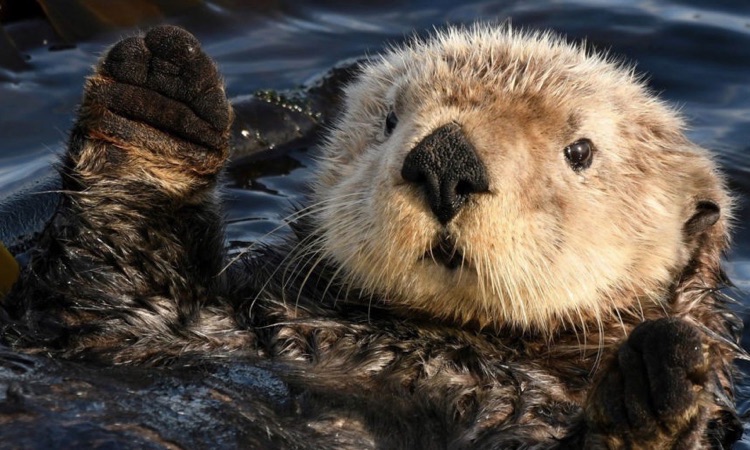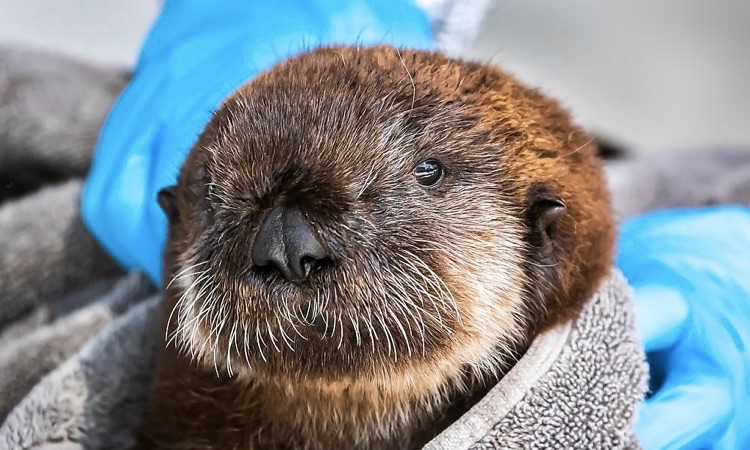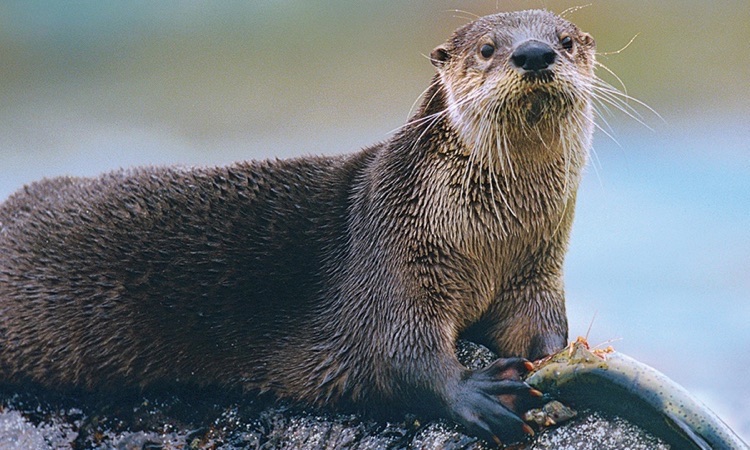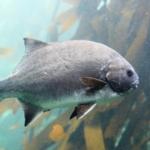At a glance, a river otter vs sea otter may appear to be very similar creatures. However, there are actually several key differences between the two animals that distinguishes them from each other.
Furthermore, their diets, lifespans, and locations are dissimilar from one another as well as how they look.
In this article, we will explore the physical and behavioural differences between river otters and sea otters. With this knowledge, you can better appreciate what makes each species special. Let’s get started!

Sea Otter vs River Otter: The Main Differences
Sea and river otters might look similar, but there are several key ways in which they differ.
River Otters and Sea Otters are Different Species
River otters and sea otters taxonomically are in different genera. They both are classified as otters, but river ones belong to the Lontra genus while sea otters’ home is the Enhydra genus. There exist twelve sub-species of river otter. On the other hand, there are three distinct sub-species of sea otter only.
Sea Otters are Larger
Most people are unaware that sea otters are significantly larger than river otters. The average weight of a sea otter is one hundred pounds, whereas the largest river otter weighs in at only thirty pounds. That’s quite a size difference!

Different Types of Fur
River otters have two layers of fur: a short, coarse inner layer that keeps them warm and an outer layer that keep them waterproof. Although you might not be able to tell by looking at river and sea otters, their fur is very different.
Sea otters actually have one layer of fur, which is the densest fur of any other known animal. This results in river otters having short, sleek fur, while sea otters have long, fuzzy fur.
They Reside in Different Waters
Although they are called river otters, these creatures can actually live in both fresh and salt water. They often build their homes on the banks of rivers but sea otters only live in salt water and very rarely come onto land.
Number of Offspring
Another big difference is the number of offspring these animals have. A river otter mother commonly gives birth to two or three babies, called pups. River otter mothers look after their pups until they are half a year to a year old.
River otters give birth to many offspring and only care for them until they are weaned, while sea otters have one pup at a time and take care of them until they are around one year old. Additionally, river otters build dens on the riverbanks where their babies stay with them, as opposed to sea otter mothers who carry their young on their chest.
Sea otters keep their offspring on their stomachs to ensure their safety, and if they are unable to do so for any reason, like hunting, they have been known to wrap them in kelp and let the tide hold them afloat while the mother searches for food.

Differing Lifespans
River otters’ lifespans are shorter than sea otters’ because they’re smaller and more vulnerable to predators.
The average lifespan of a sea otter is twelve to fifteen years in the wild, while river otters only live nine to twelve years on average. Scientists think this difference is size-related.
Different Diets
The diet of a river otter consists mainly of frogs, fish, crayfish, reptiles, and birds because their habitat is largely different from sea otters.
The diets of sea otters commonly consist of seafood that they would find in their natural habitats, such as urchins, seaweed, clams, and crabs.
Mating Habits
Again, another difference between sea otters and river otters is their mating habits. Did you know that sea otters actually mate for life? That’s right, they do!
River otters, on the other hand, will mate with multiple partners throughout their lives. Furthermore, sea otters usually live in small or large groups of family members.
River otters, especially males, are more recluse and while they don’t mind being social occasionally, they would generally rather have a solitary life or be in a small group of people closely related to them.
What is a River Otter?
Lonely creatures, saltwater and freshwater rivers are home to these carnivorous mammals. They typically come together only for mate selection.
River otters are unique in that they enjoy both land and water. Their thick coat of fur protects them from the cold when they’re on dry land looking for food or building homes for their young.

What is a Sea Otter?
Sea otters, as their name might suggest, are mammals that stay near saltwater and are very cute. They use tools to help them hunt better which is unique for a mammal. Also, they have the densest fur of any other mammal on Earth!
The sea otter is a remarkable creature because it’s the only marine mammal with enough strength to overturn rocks and boulders on the ocean floor in order to find food. What’s more, these sea animals are incredibly cute. They hold hands when sleeping so as not to drift away from their family units.
In Summary
Did you now know that there are two different species of otters? While they might look similar, these creatures have evolutionarily adapted to different habitats. As a result, their fur coats best suit the environments in which they live.
The sea otter is not only significantly bigger than the river otter, but they also have differences in how they mate and parent.
Although these animals may look similar at a first glance, there are many ways to tell them apart. For example, their size or habits. Would you be able to identify which animal was which if you saw them side-by-side?


